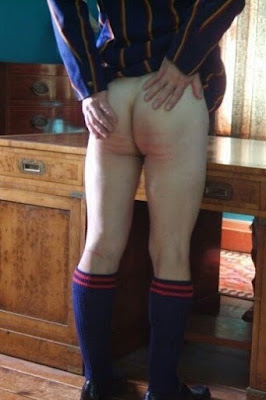Memories: ‘My backside looked like a zebra crossing’
‘I went for the cane each time – my backside looked like a zebra crossing. Initially I kept my school jacket on to deflect the blows and wore layers of white Y-front underpants. He soon woke up to this and made me strip to my singlet.’ Corporal punishment has always been part of the culture and tradition of all boys’ schools, especially in the 19th and 20th centuries. Launceston Church Grammar in Tasmania was no exception and the birch or cane was wielded as a means of instilling discipline, as this tribute book to the school shows.
Physical punishment and
occasional ‘floggings’ were all part of the fabric of school life. Corporal
punishment was not just regarded as a necessary evil in the school but as an
actual benefit to the students, as it was thought to be character forming. No
pupil could hope to gain the respect of their peers until they had been given
‘six of the best’.
I think it took up to the
1970s for Grammar to drop corporal punishment.
Those who remember Miss Stubs
at little Grammar will recall that she was not averse to producing a cane but
more often than not would produce a wooden ruler and apply it to the hand or knuckles.
The only other little Grammar headteacher was Rev Maddox who kept a suite of
canes in his office.
Several senior teachers
wielded a mean, whippy cane to students who misbehaved and required
disciplinary actions. Trevor ‘Tadpole’ Sorrell was well known for this in his
position as master of the boarding house for most of this period. Others such
ad Jack Parish and MAP Mattingley, who also stood out amongst the senior
teaching staff for practicing the art successfully.
Headmasters Roff and Jones
were known for their disciplinary methods, but it was ‘Jika’ Travers who is
best remembered for caning a whole class of boys in the late 1950s. Both Alf
Champion and Paul Richards were members of that particular class and remember
this vividly, and Jika turning up with three canes in his hand.
There were many other
instances of these disciplinary measures, with an array of cuts delivered from
one blow to what was commonly referred to as ‘six of the best’. It was not
uncommon in the boarding house to see several boys lined up outside Trevor
Sorrell’s office in the late afternoon awaiting punishment.
…
In his book Cheeky:
Confessions of a Ferret Salesman, Robert Cheek is scathing of his treatment and
constant canings by ‘Jika’ Travers in the 1950s.
I started
brilliantly at Grammar and was dux of the junior school, but it went downhill
from there. The constant travelling, being too tired for homework, rebellion
against tough discipline and putting sport first, took their toll. My school
memories are mostly of Saturday morning detentions when Dad had to run me in
from Evandale in the De Soto – six stinging cuts with the cane to the backside
from Jika and teachers I loathed. The canings were brutal and frequent.
Exasperated by my almost permanent detentions, Jika gave me the choice of a
thrashing instead.
Thinking of my
dad, I went for the cane each time – my backside looked like a zebra crossing.
Initially I kept my school jacket on to deflect the blows and wore layers of
white Y-front underpants. He soon woke up to this and made me strip to my
singlet.
Extracted from A
Private Education, Launceston Church Grammar School 1940 – 1965, by Paul AC
Richards and Peter Mercer, available here.
Picture credit:
Unknown.
For more True Memories,
click here
Traditionalschooldiscipline@gmail.com







That is a picture of sheer beauty. The pain has gone and it is that nice warm feeling and the satisfaction of having six nice stripes in your ass.
ReplyDelete